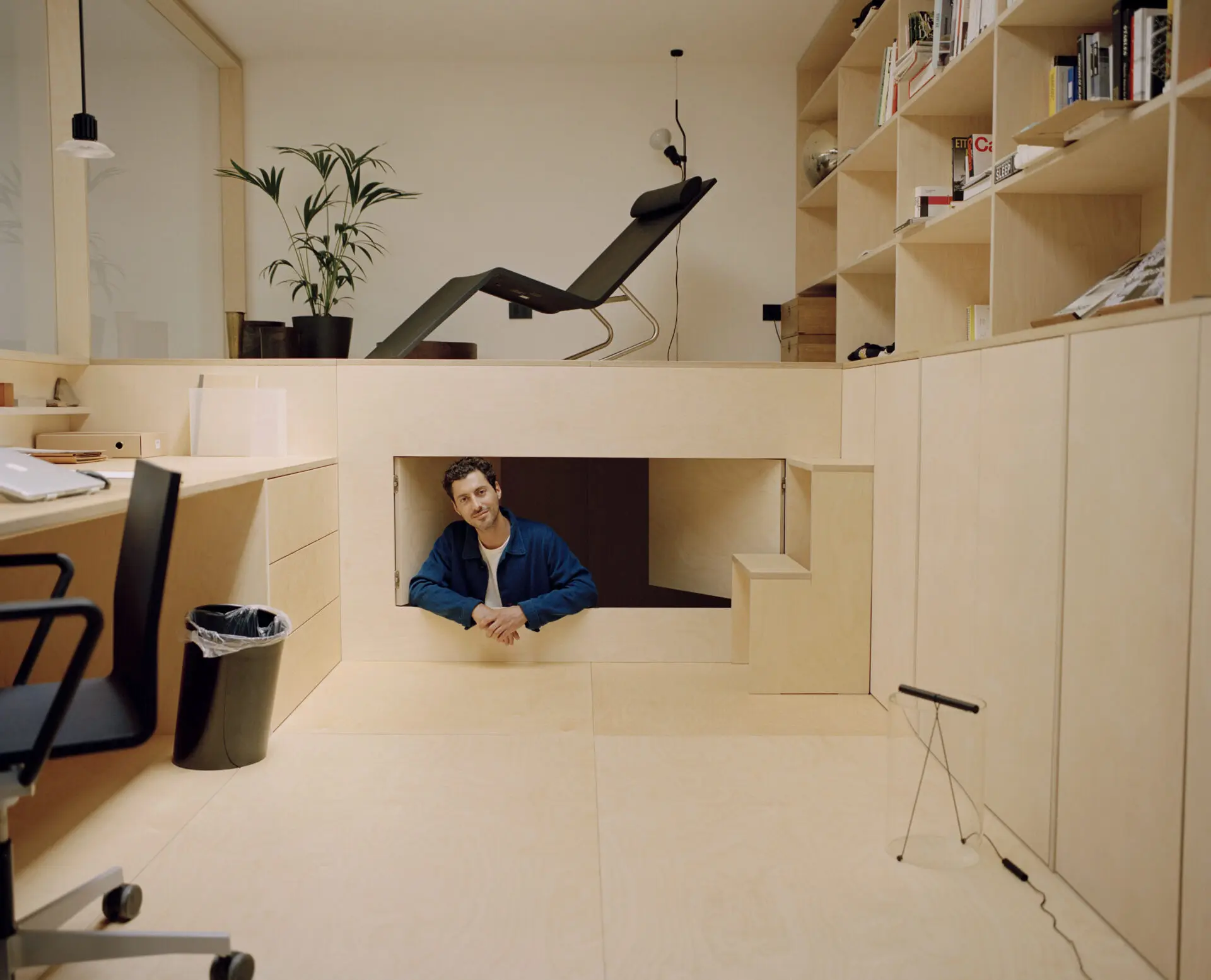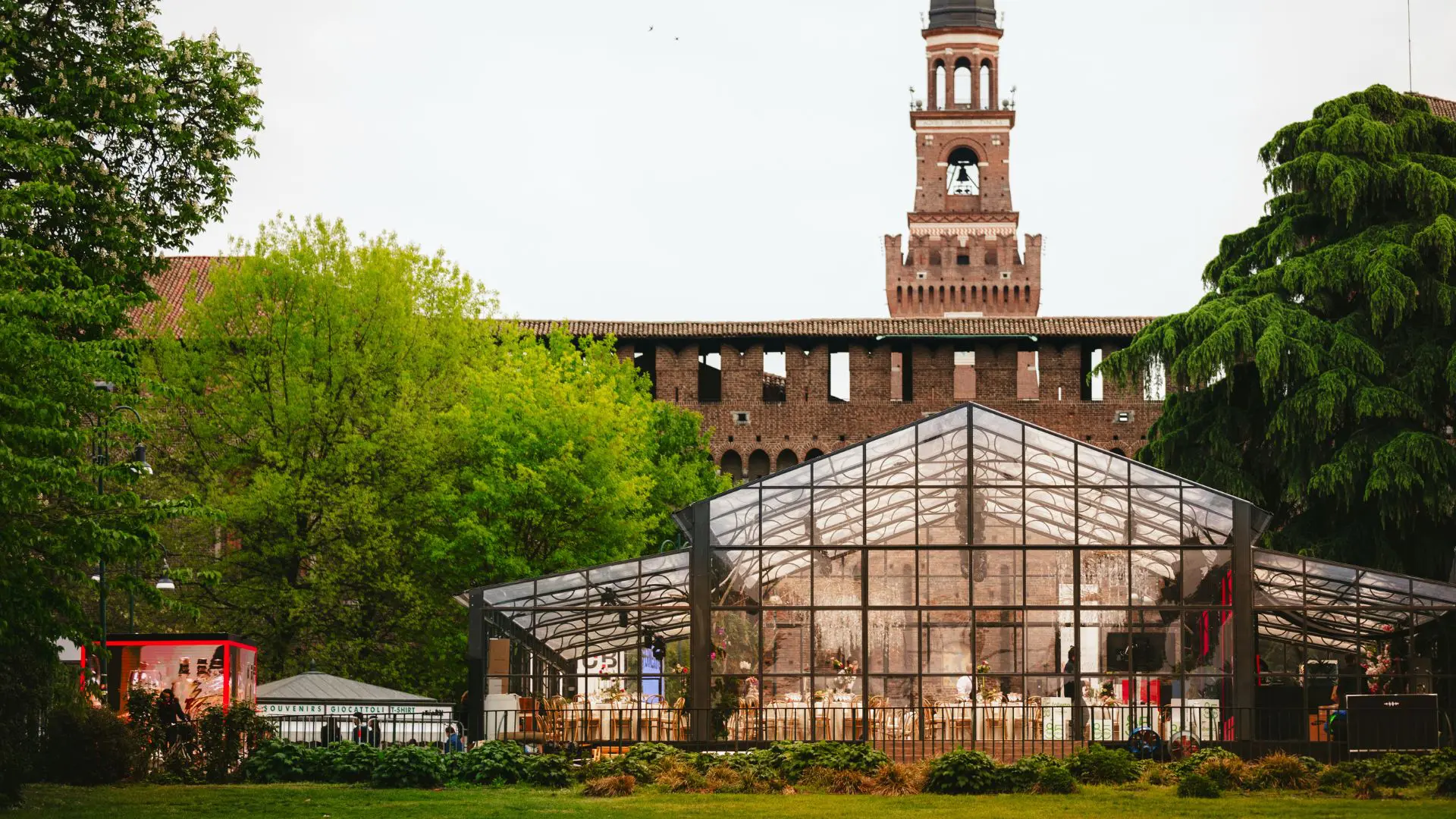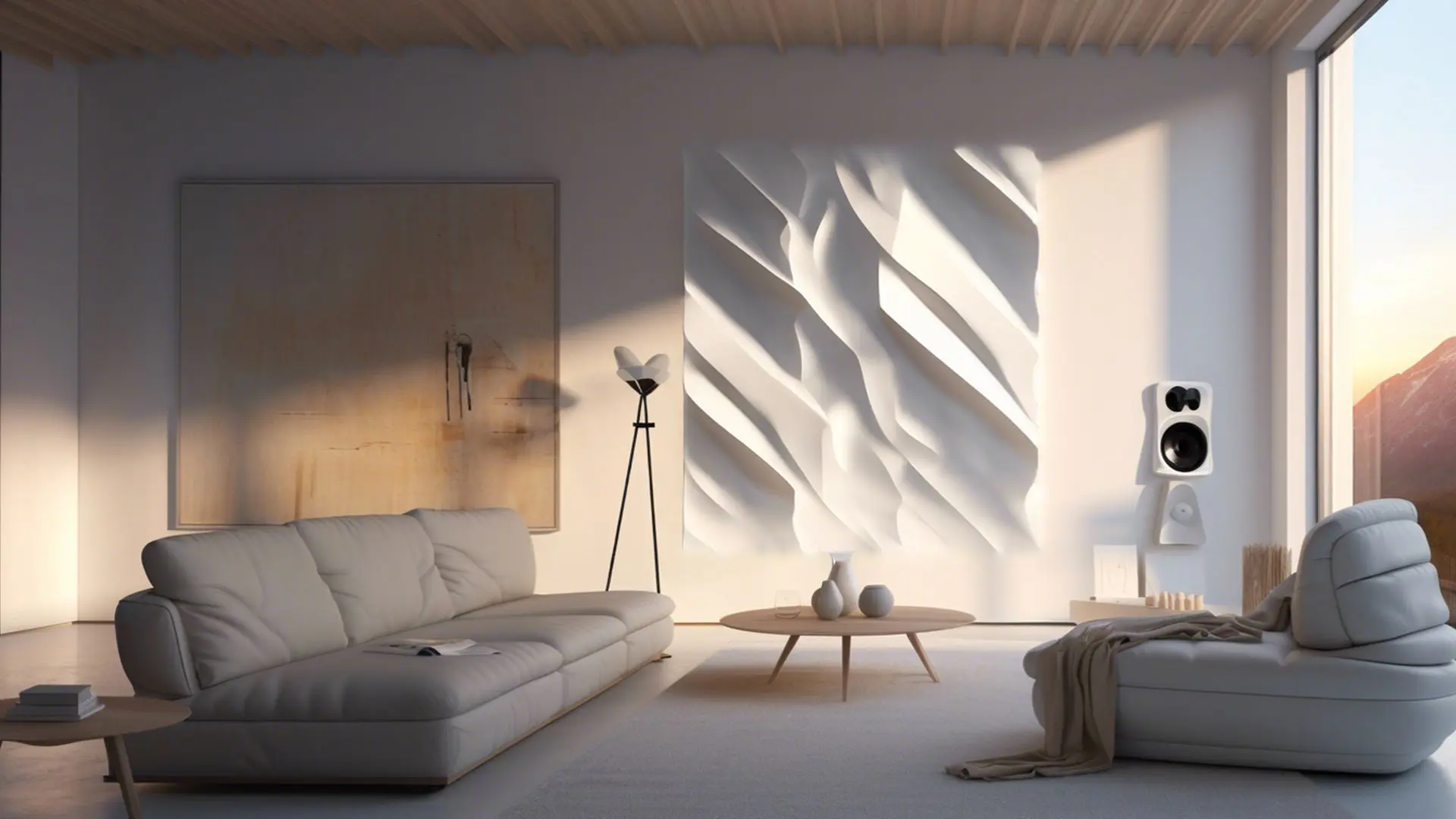How Guglielmo Poletti masters minimalism through balance and tension
The visual balance and tension in Guglielmo Poletti’s work is striking, especially considering his ability to achieve it with natural geastures. But what is the design criteria behind his products?
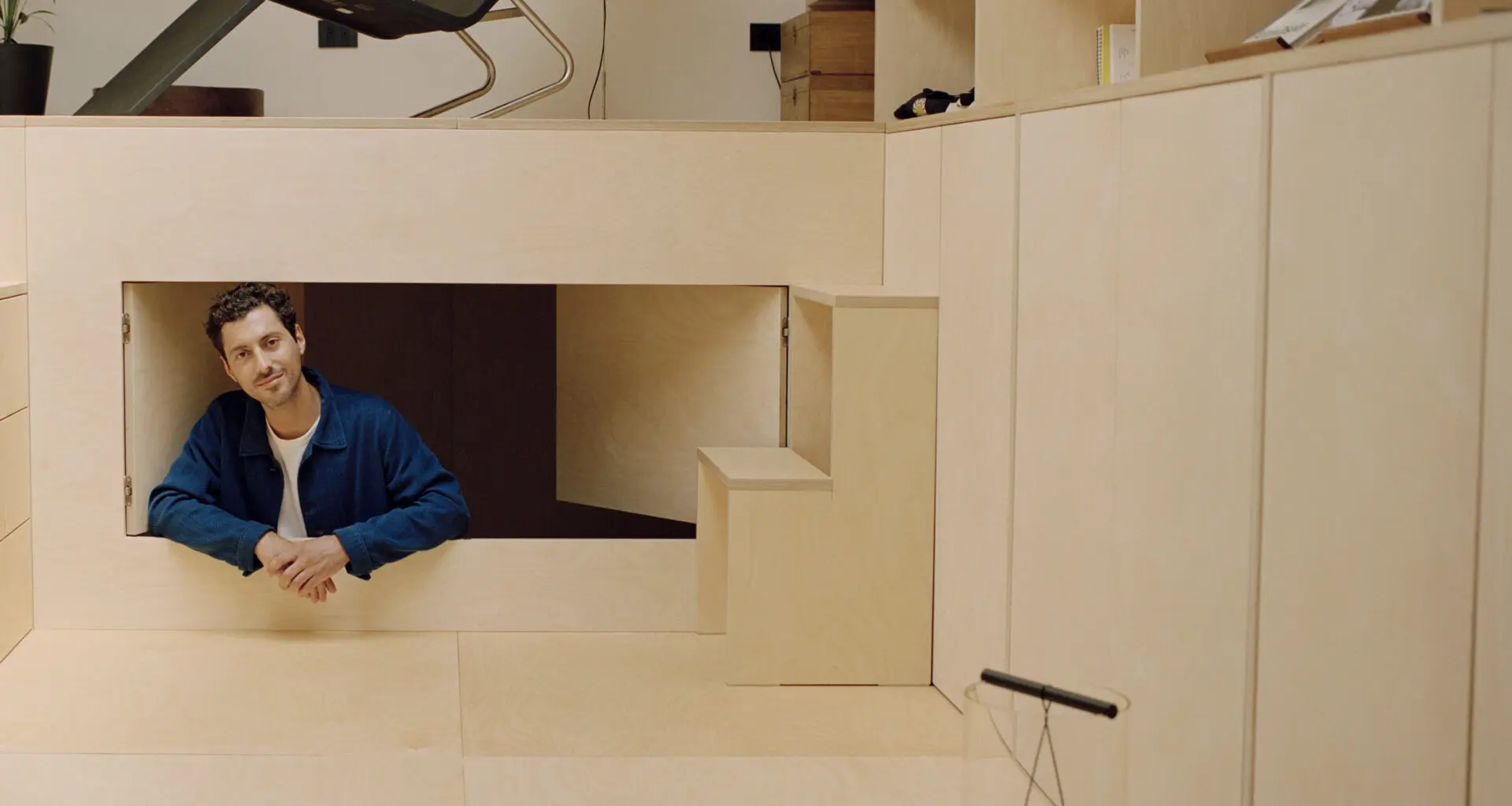
Guglielmo Poletti is an Italian designer whose collaborations involve some of the most renown names in the Italian design industry, such as Flos and Magis. At first glance, his precise work appears to belong to the tradition of pure minimalism. However, a closer look reveals the hidden layers behind each of his creations. Let’s explore some of his most significant projects tin order or discover the underlying design criteria that define his approach.
The essence of Guglielmo Poletti’s design theory
To-Tie – Flos
To-Tie, Guglielmo Poletti’s table lamp collection for Flos, is a revolutionary piece – no lamp like this has ever been designed before. If you recall, we previously discussed this lamp in an article about Calvi/Brambilla at the time when the duo collaborated with Flos as Design Curators.
The core of the project lies in the tensioning system, which outlines both the formal and functional qualities of the lamp, resulting in a geometry that defies the conventional definition of lighting. In order to understand how Poletti achieved this, it could be helpful to check some of his earlier projects, where he used similar construction principles applied to different product typologies. In this regard, the most relevant piece is probably the low table he developed for Rossana Orlandi this regard, the most relevant piece is probably the low table he developed for Rossana Orlandi (one of Italy’s most renowned design talent scouts and gallerists), which employs the same structural concept to fulfill a different functional aim, creating an elegant joint which holds together the tabletop and base.
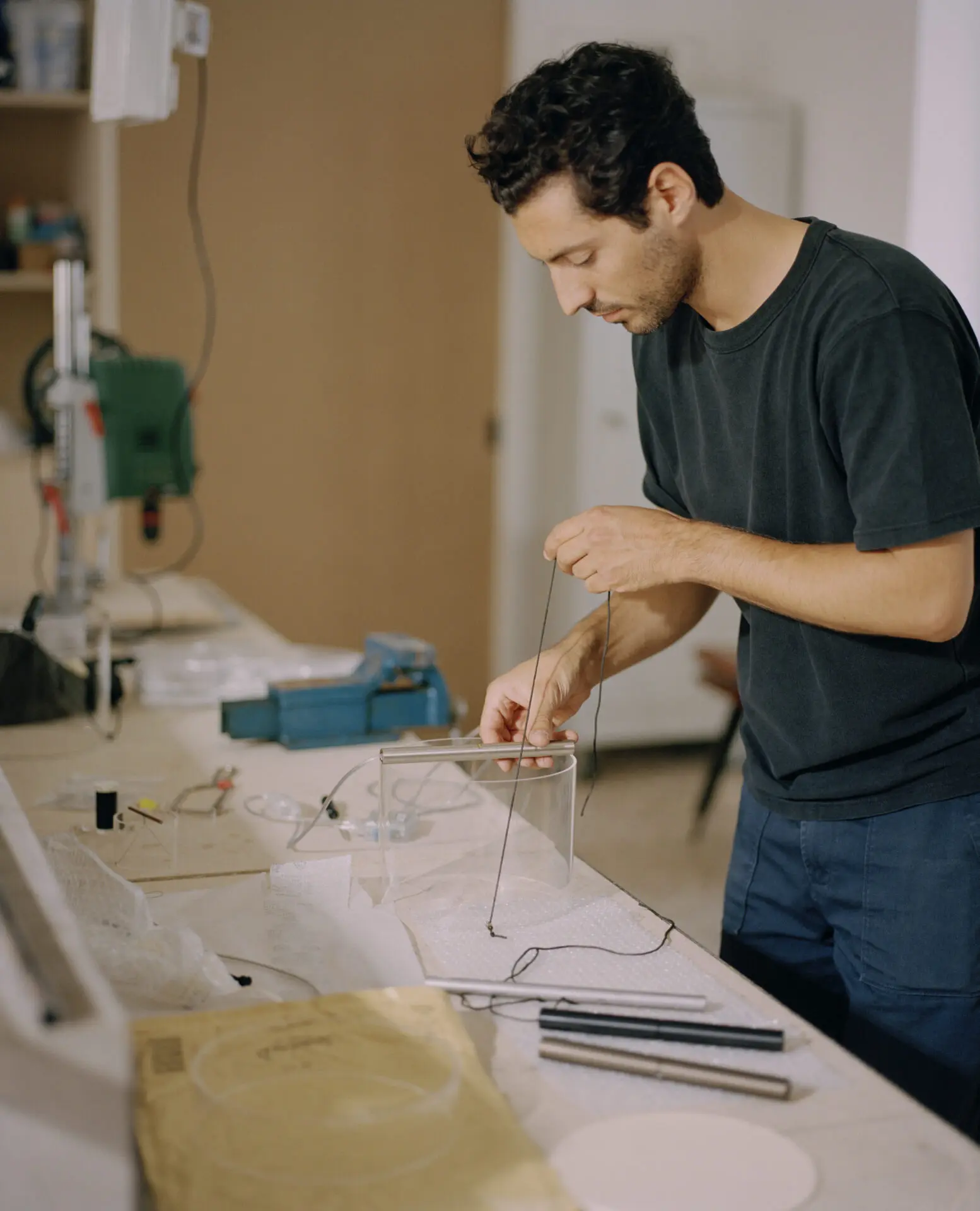
Equilibrium Low-Table – Rossana Orlandi
The Equilibrium Low Table is characterised by a very graphical composition which is the result of its brilliant construction rather than just aesthetic choices. This research-driven approach is incredibly valuable – without the intermediate step of the low table, Poletti might have not have envisioned how a similar principle could be enhanced through lighting.
The designer first presented his research developed around tension back in 2016, as his MA graduation project at the Design Academy Eindhoven. The series, named Equilibrium, included not only the low table but also a console, a bench, and a stool (as discussed in a 2018 article). All these pieces share a common theme: the use of a cable as the key structural element. Among them, we found the console to be particularly captivating.
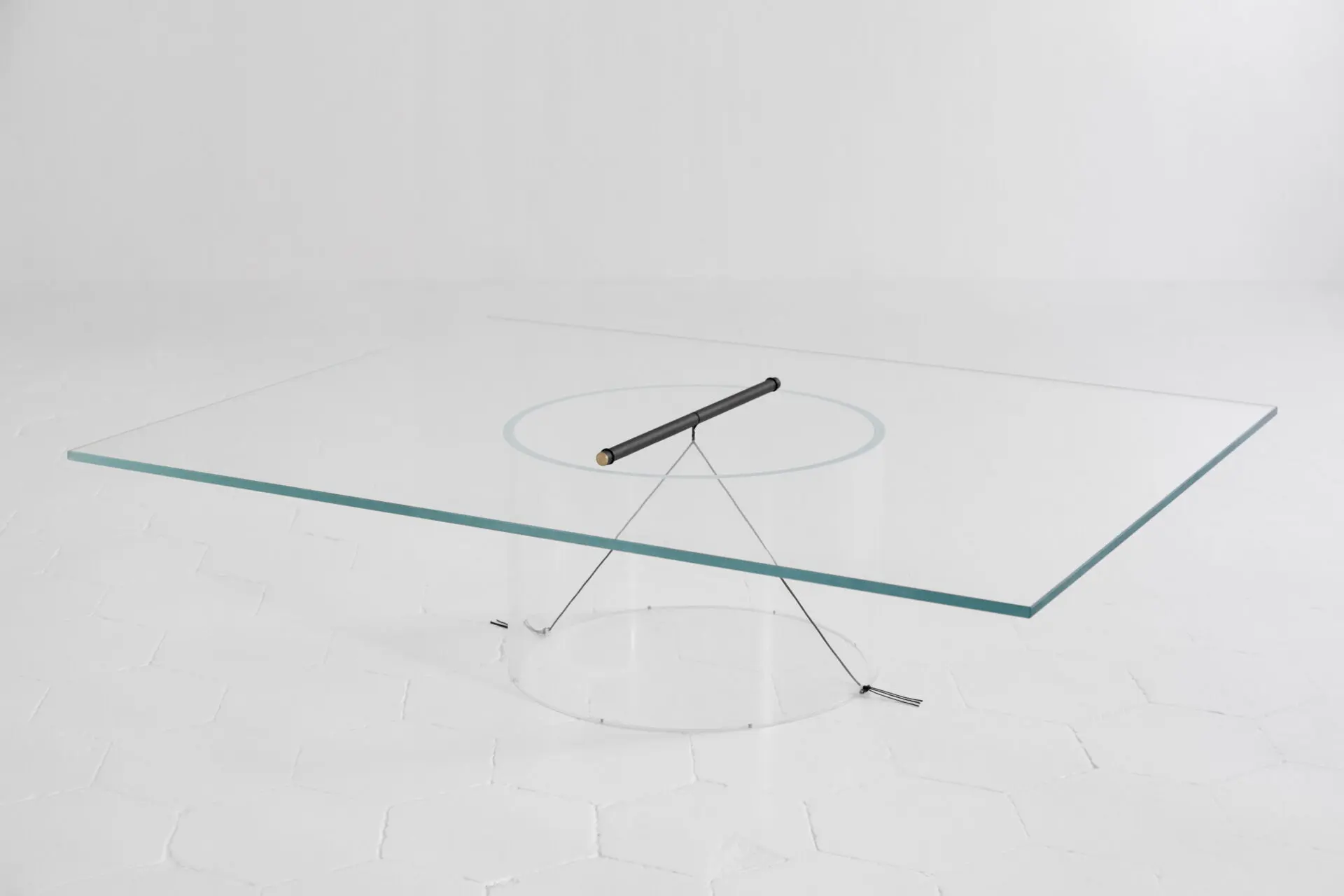
Equilibrium Console – Rossana Orlandi
In each of the pieces from the Equilibrium Series, tension is applied to very different materials inorder to achieve different structural results. In the case of the console, the piece is characterised by the very thin profiles of the top and the base, made out of 4 millimeters darkened Corten steel sheets. The two elements stay in balance thanks to the tensioning system, while the gently curved top is pre-bent in order to get charged with the tension necessary render the structure load bearing. From a visual point of view, the expectation is that the structure would collapse under weight, yet everything is held together thanks to a single cable. The clarity of such construction is highlighted by the extreme purity of its form – just two curved metal pieces convey the whole idea.
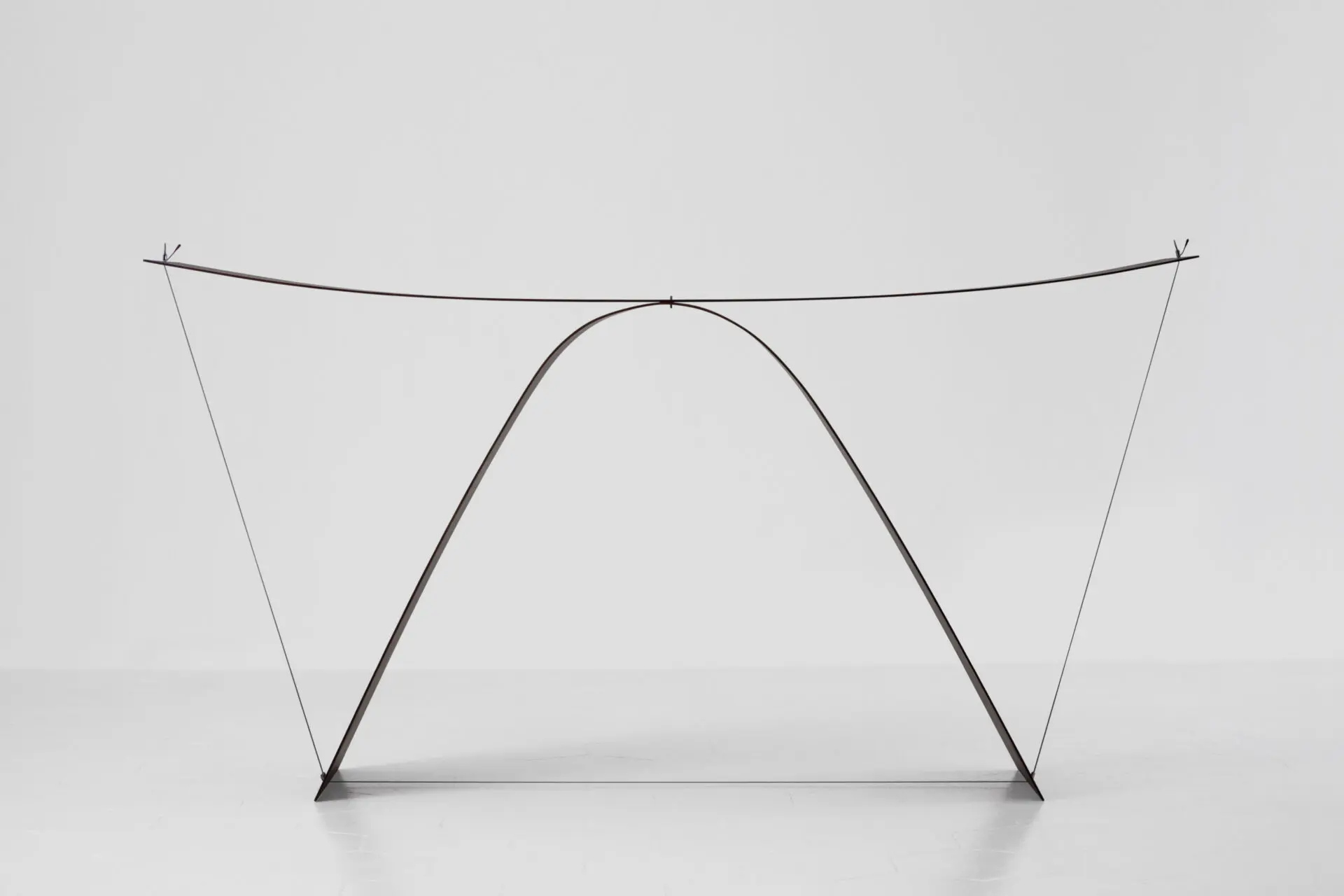
This peculiar approach, characterised by aesthetics which always result from structure, is also evident in his first industrially produced designs, such as the Void collection for Desalto.
Void – Desalto
This collection further demonstrates that design innovation might also stem from an ongoing research, rather than single ideas. Guglielmo Poletti’s ability to communicate complexity through simple forms is the result of years of study and refinement. In this case, he investigated form in relation to the architectural notions of mass and emptiness, still managing to maintain the characteristic traits present in all his work.
Entirely made out of steel, the collection is comprised of several furniture pieces and is characterised by volumes whose profiles delineate a solid that has been partially econstructed and carved out. The configuration of the base not only supports the top by distributing its weight uniformly, but also defines a space which alters the visual perception of the objects.
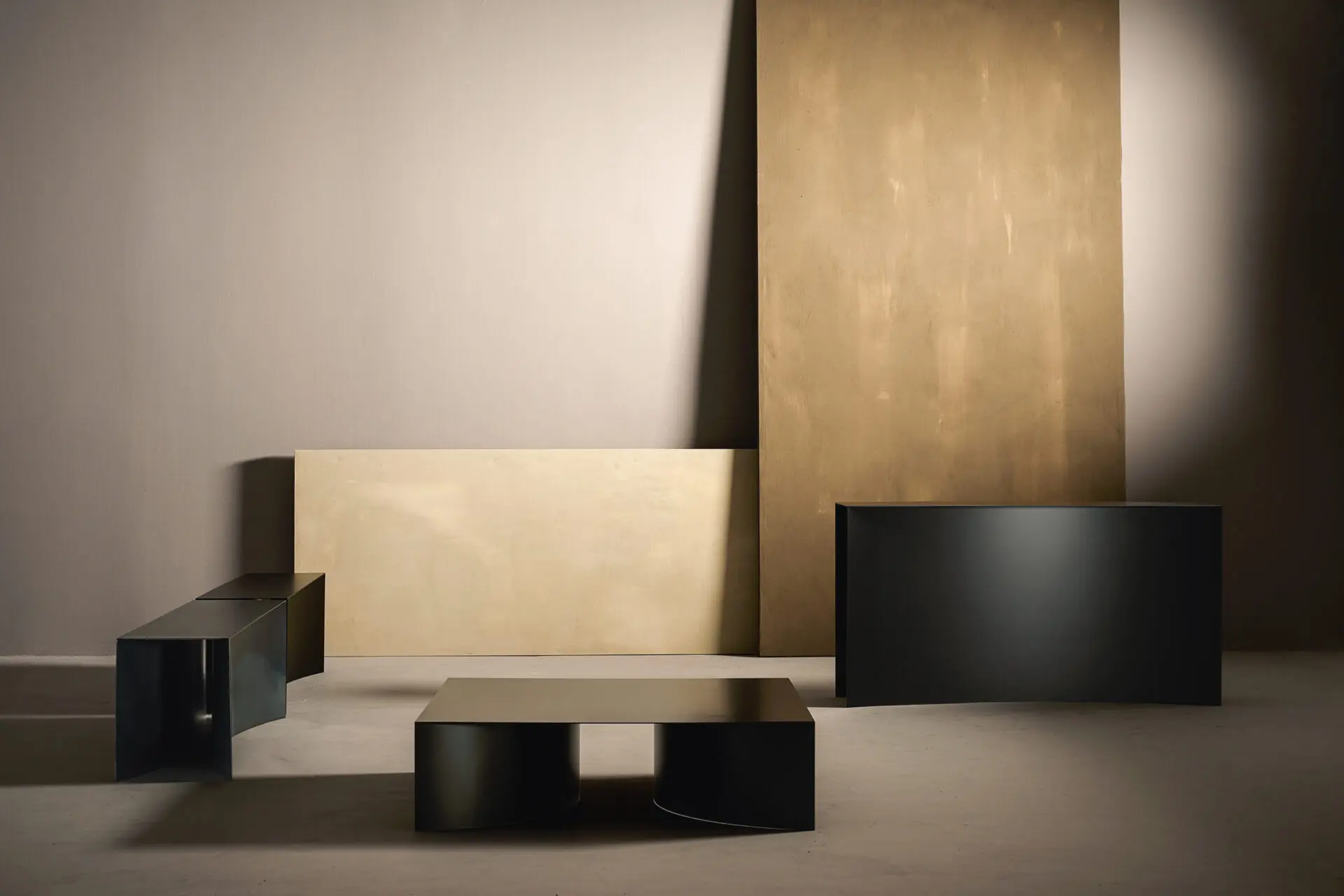
Guglielmo Poletti’s work is a testament to the idea that solid design criteria can elevate even the simplest shapes into striking, thought-provoking objects. His exploration of tension, balance and minimalism results in pieces that are not just aesthetically refined but intellectually engaging.
By continuously pushing the boundaries of construction principles and perception, Gugliemo Poletti’s practice managed to occupy a distinctive space within the contemporary design scene – one where simplicity and complexity coexist in perfect harmony. His work acts as a reminder that great design, beyond its aesthetic qualities, always incorporates many invisible criteria that shape our perception of objects.


